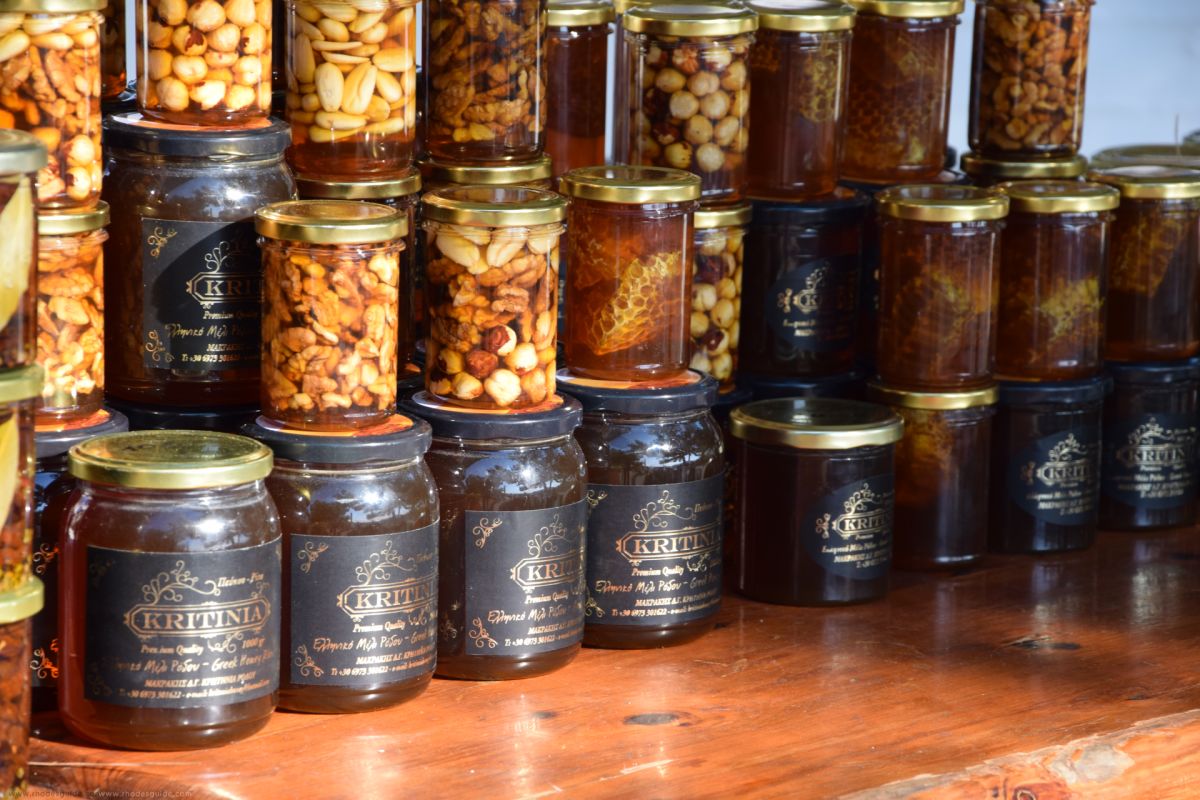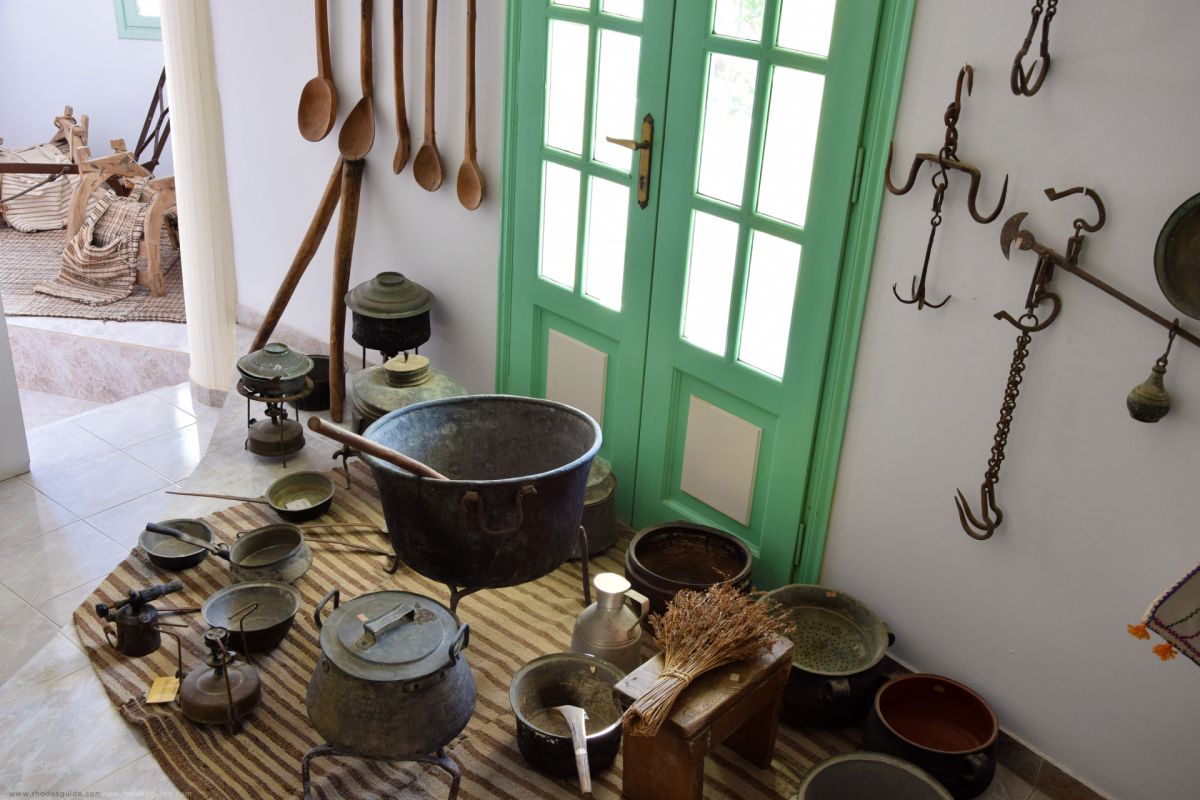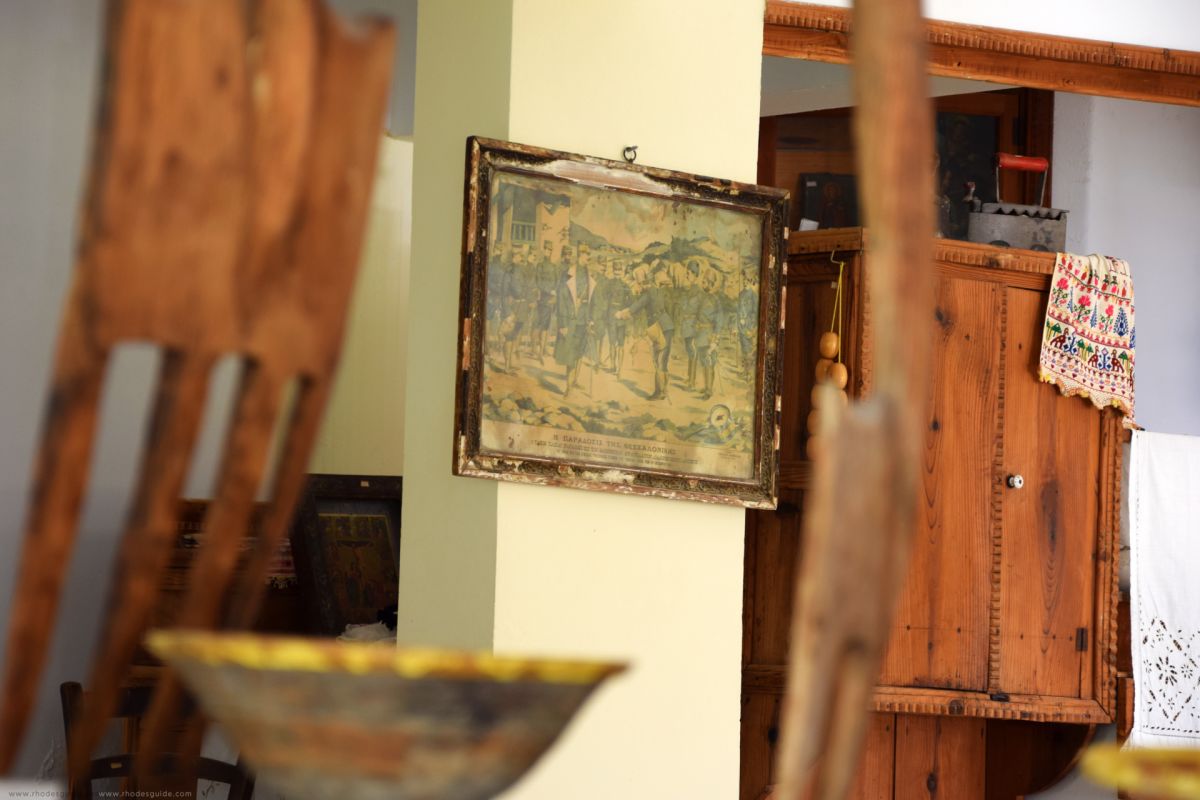The visitors who come here rarely make it past the castle - at the most they might look in at the Folklore Museum at the entrance to the village. In the village centre at the Platia the traditional Kafeneion (cafe) "O Platanos" provides visitors with coffee, refreshments and ice cream under a huge plane tree.
To the left of the Kafeneion starts the footpath to the small church Ágios loánnis Pródromos (forerunner of the Anabaptists), which huddles under two large black cypresses, 10 minutes from the village.
Fact is, that the still quite original village of Kritinia on the slope below the west coast road, is often carelessly ignored. Nonetheless, one can call it one of the most beautiful and original villages of Rhodes.
A stroll through the idyllic Kritinia is a relaxing experience, as strangers hardly dare to venture into the narrow maze of alleys. The village only has two main roads: One is to drive through, the other one leads to the village square. In between is the elongated village church with its four-storey tower.
On the main street, at the entrance of Kritinia village, right next to the folklore museum, you will find a cafeteria with beautiful views over the village as far as to the small uninhabited islands Makri and Strogyli. Especially late in the afternoon and at sunset this location offers itself for a quiet and peaceful evening.
The name Kritiniá is said to come from the island of Crete - in Greek Kríti. According to legend, the son of King Katreus and grandson of the legendary King Minos of Crete, Althaimenes, landed here on this coast, which is facing Crete.
Most of the villagers are farmers who work in the greenhouses and street markets of Rhodes town or in the fish tavernas of Kameiros Skala, the little harbour from which the boats set out each day for Chalki.





 English
English
 Deutsch
Deutsch
 Ελληνικά
Ελληνικά